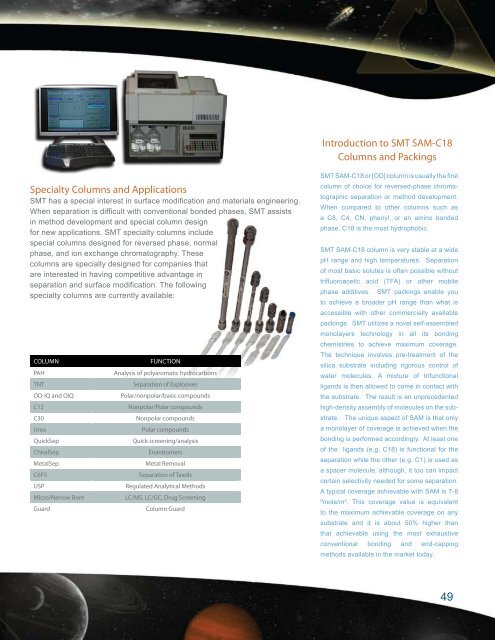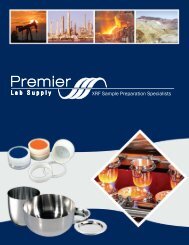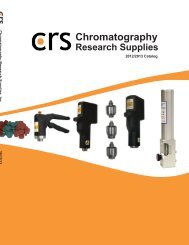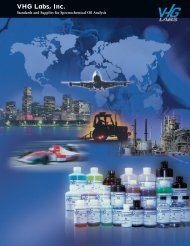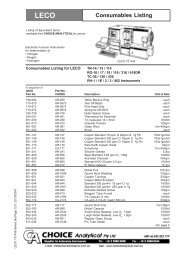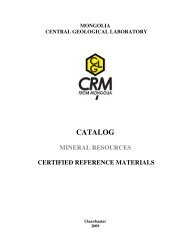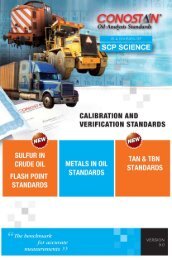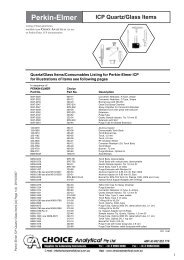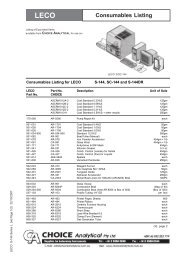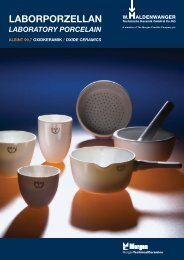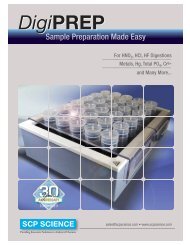You also want an ePaper? Increase the reach of your titles
YUMPU automatically turns print PDFs into web optimized ePapers that Google loves.
Introduction to SMT SAM-C18Columns and PackingsSpecialty Columns and ApplicationsSMT has a special interest in surface modification and materials engineering.When separation is difficult with conventional bonded phases, SMT assistsin method development and special column designfor new applications. SMT specialty columns includespecial columns designed for reversed phase, normalphase, and ion exchange chromatography. Thesecolumns are specially designed for companies thatare interested in having competitive advantage inseparation and surface modification. The followingspecialty columns are currently available:ColumnPAHTNTOD-IQ and OIQC12C30UreaQuickSepChiralSepMetalSepC6F5USPMicro/Narrow BoreGuardFunctionAnalysis of polyaromatic hydrocarbonsSeparation of ExplosivesPolar/nonpolar/basic compoundsNonpolar/Polar compoundsNonpolar compoundsPolar compoundsQuick screening/analysisEnantiomersMetal RemovalSeparation of TaxolsRegulated Analytical MethodsLC/MS, LC/GC, Drug ScreeningColumn GuardSMT SAM-C18 or [OD] column is usually the firstcolumn of choice for reversed-phase chromatographicseparation or method development.When compared to other columns such asa C8, C4, CN, phenyl, or an amino bondedphase, C18 is the most hydrophobic.SMT SAM-C18 column is very stable at a widepH range and high temperatures. Separationof most basic solutes is often possible withouttrifluoroacetic acid (TFA) or other mobilephase additives. SMT packings enable youto achieve a broader pH range than what isaccessible with other commercially availablepackings. SMT utilizes a novel self-assembledmonolayers technology in all its bondingchemistries to achieve maximum coverage.The technique involves pre-treatment of thesilica substrate including rigorous control ofwater molecules. A mixture of trifunctionalligands is then allowed to come in contact withthe substrate. The result is an unprecedentedhigh-density assembly of molecules on the substrate.The unique aspect of SAM is that onlya monolayer of coverage is achieved when thebonding is performed accordingly. At least oneof the ligands (e.g. C18) is functional for theseparation while the other (e.g. C1) is used asa spacer molecule, although, it too can impactcertain selectivity needed for some separation.A typical coverage achievable with SAM is 7-8ºmole/m 2 . This coverage value is equivalentto the maximum achievable coverage on anysubstrate and it is about 50% higher thanthat achievable using the most exhaustiveconventional bonding and end-cappingmethods available in the market today.49


